
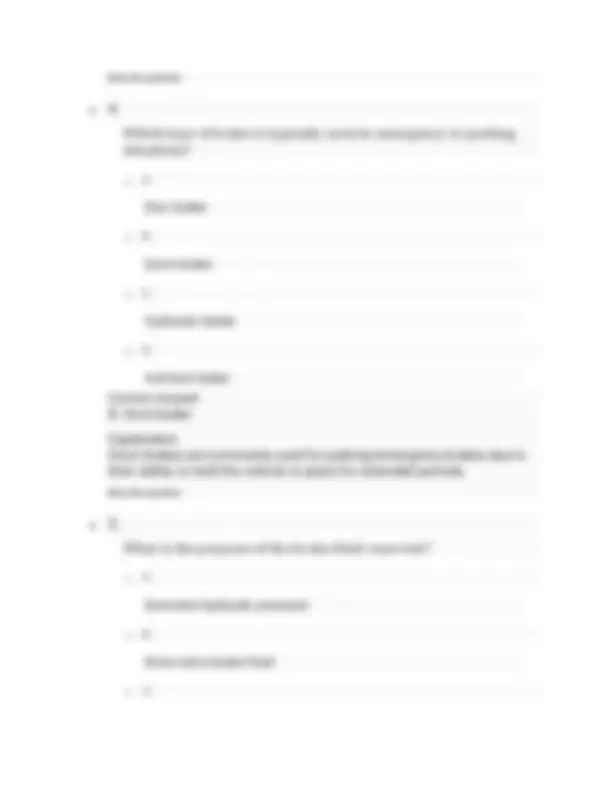
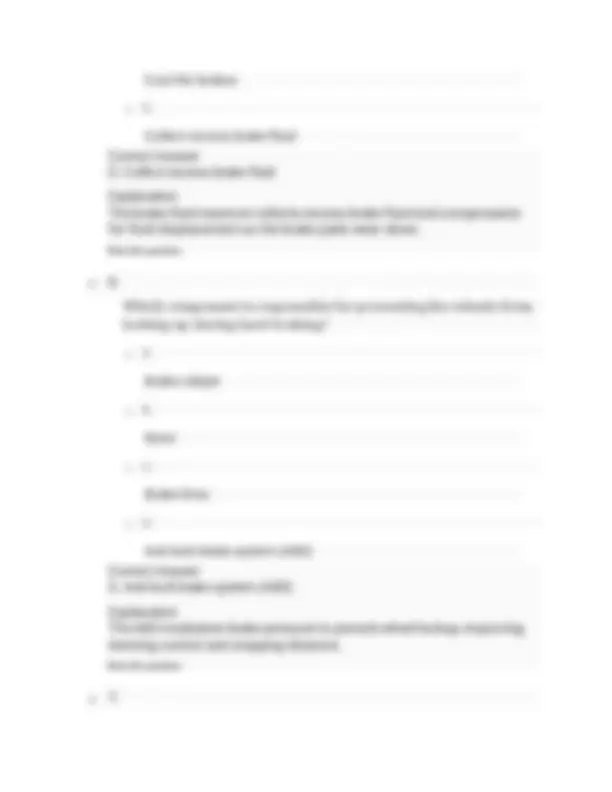
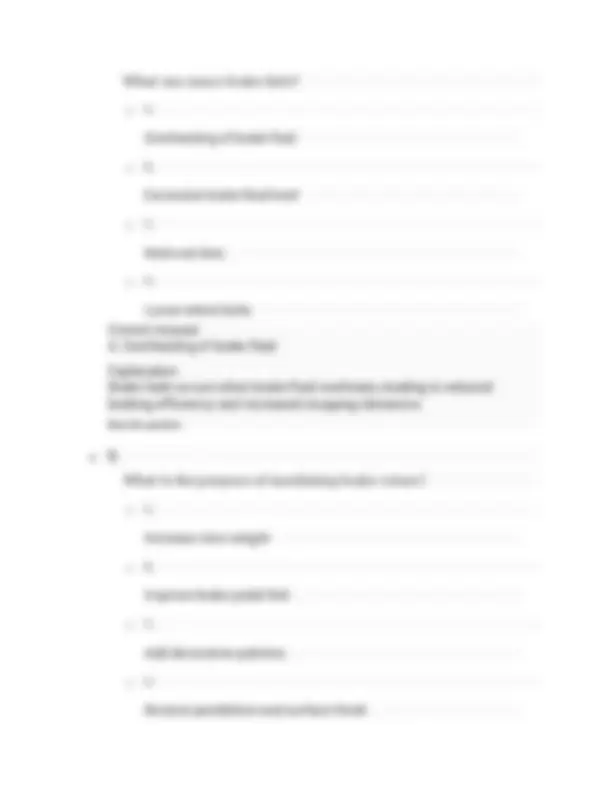
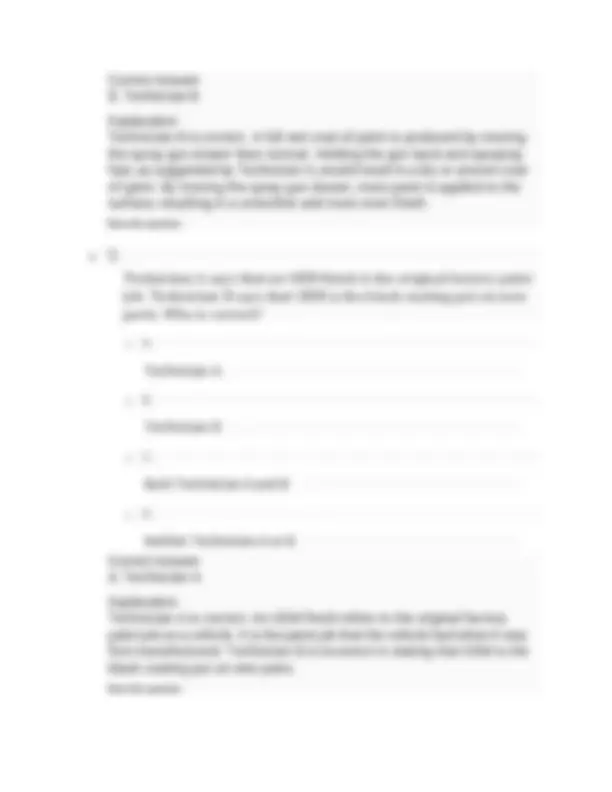
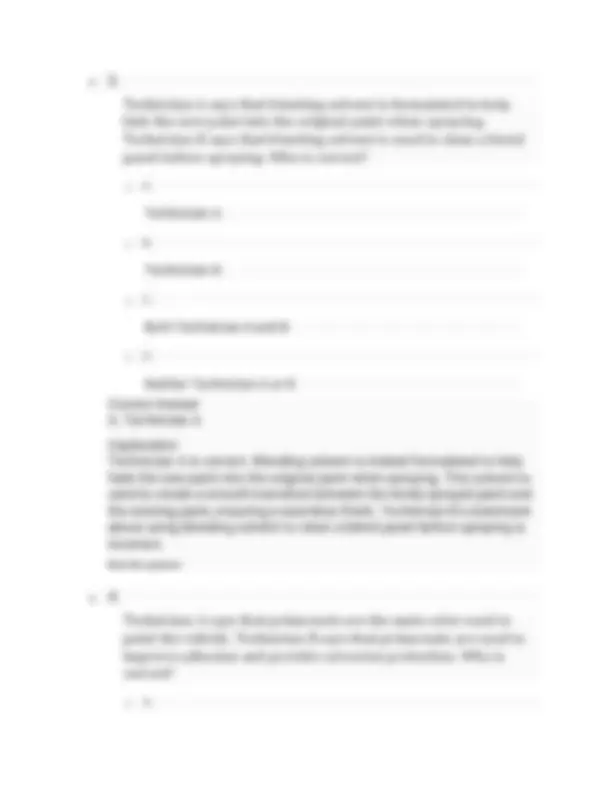
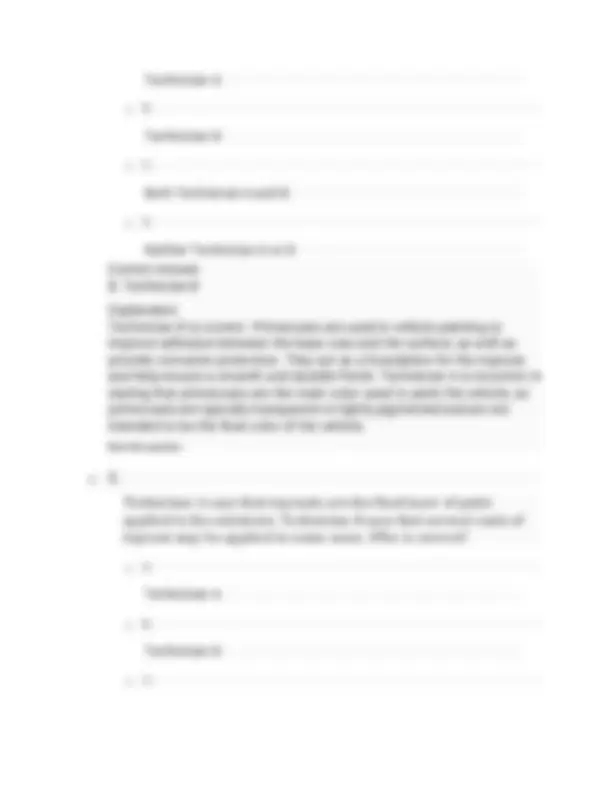
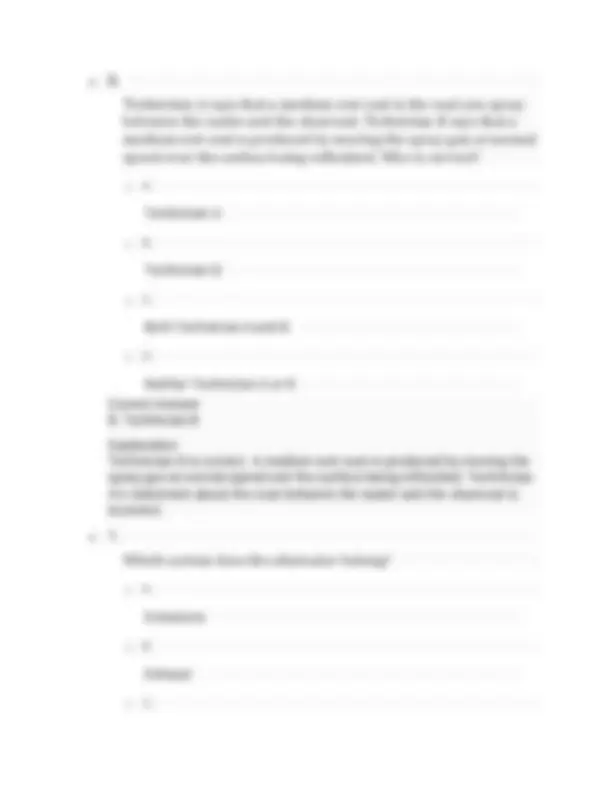
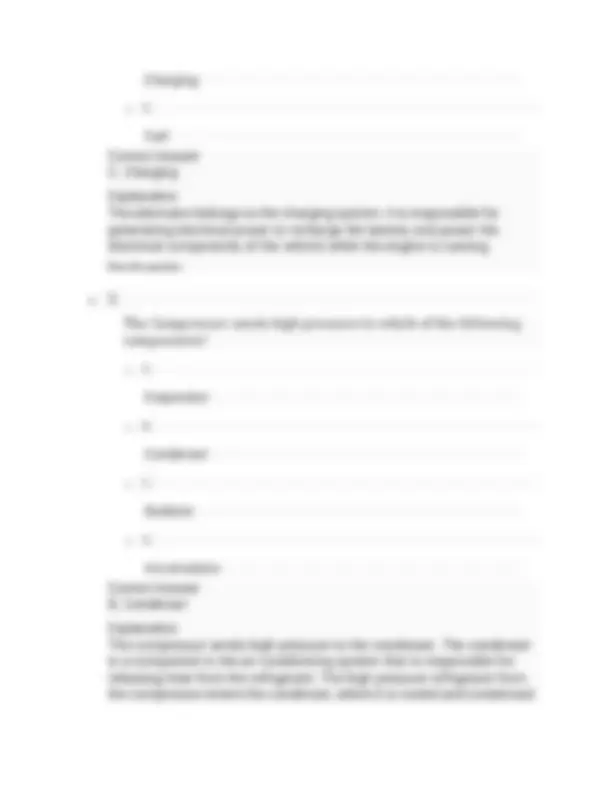
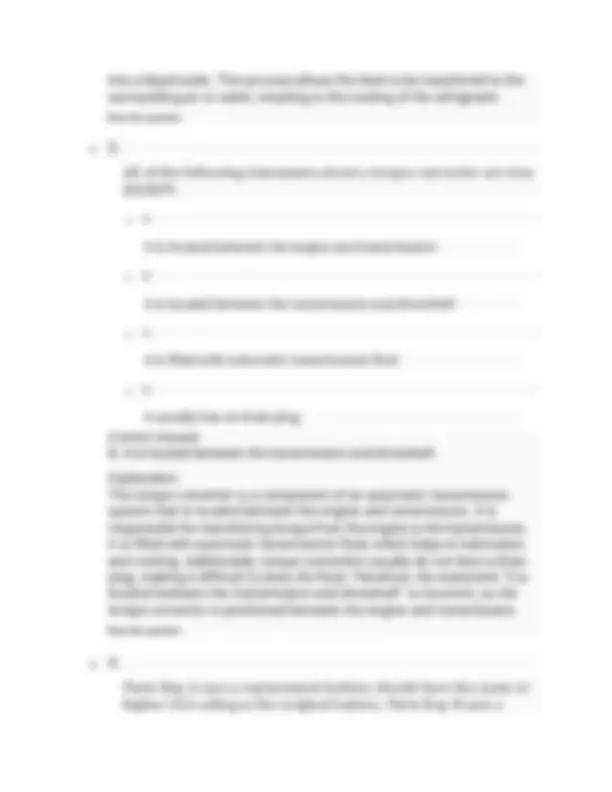
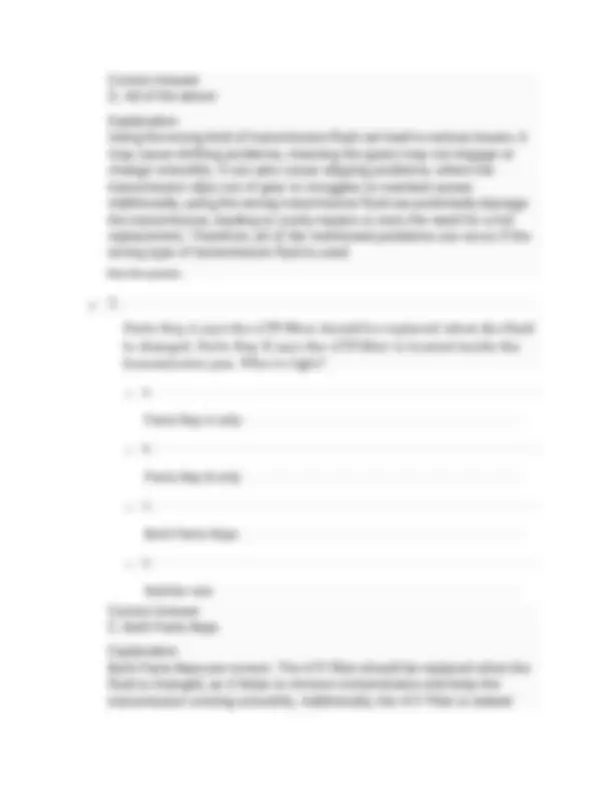
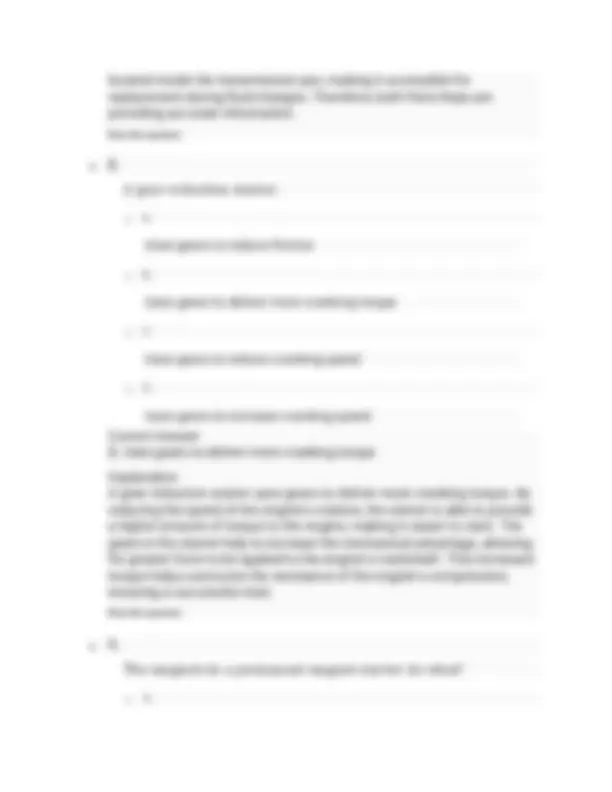
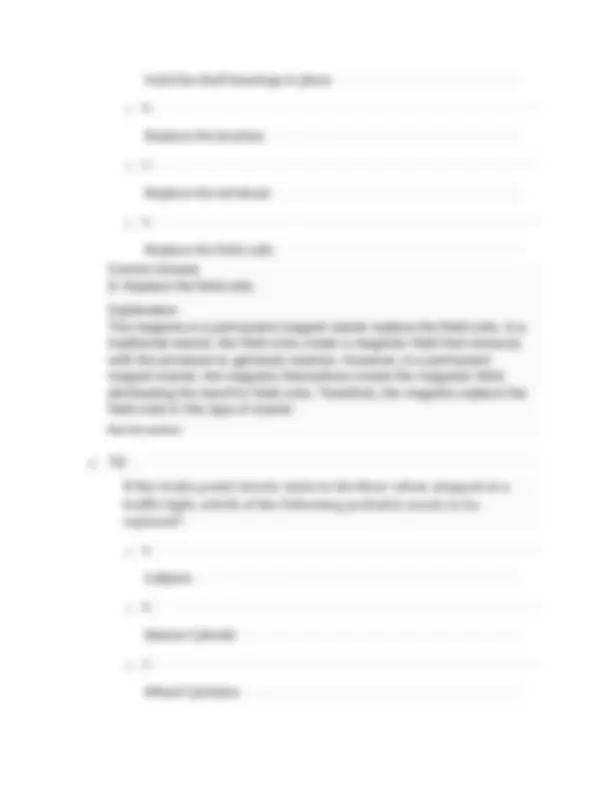
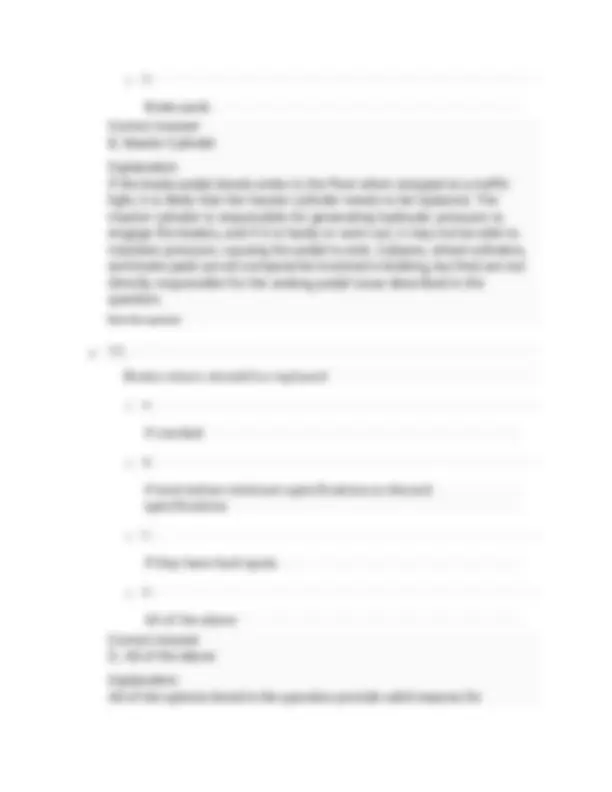
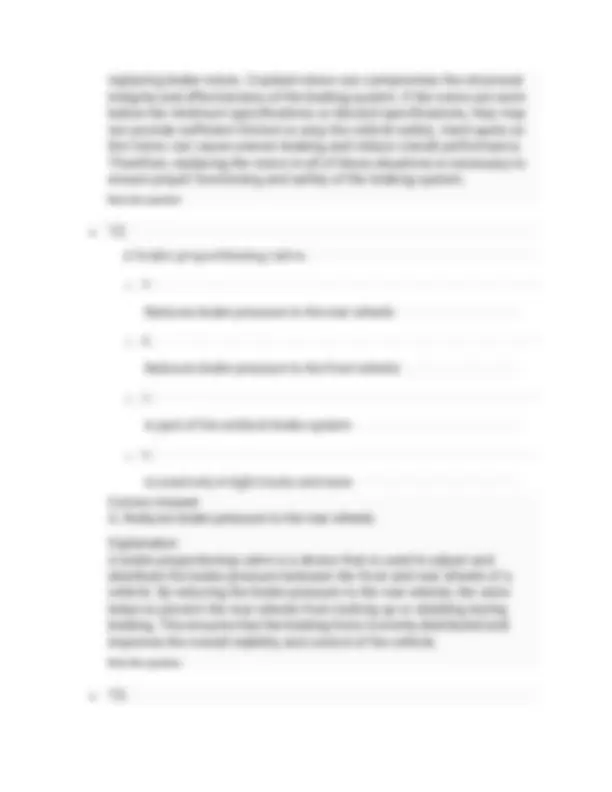
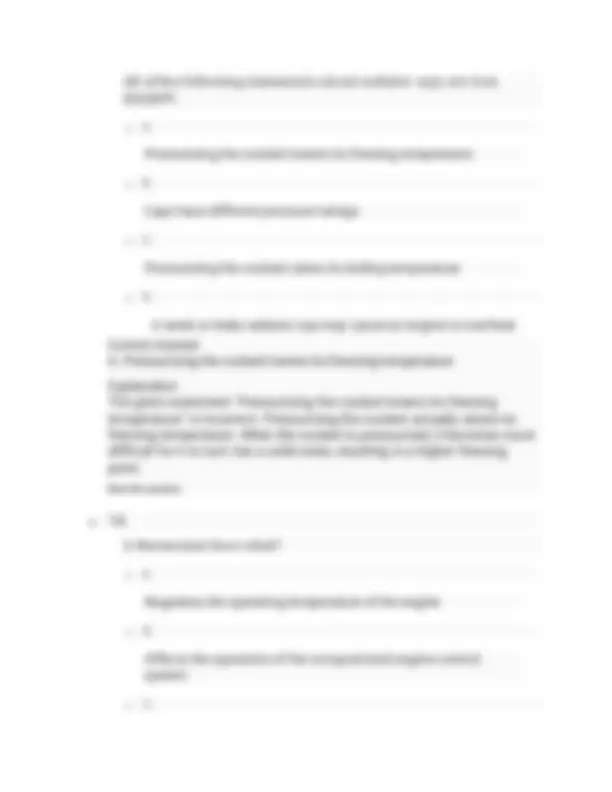
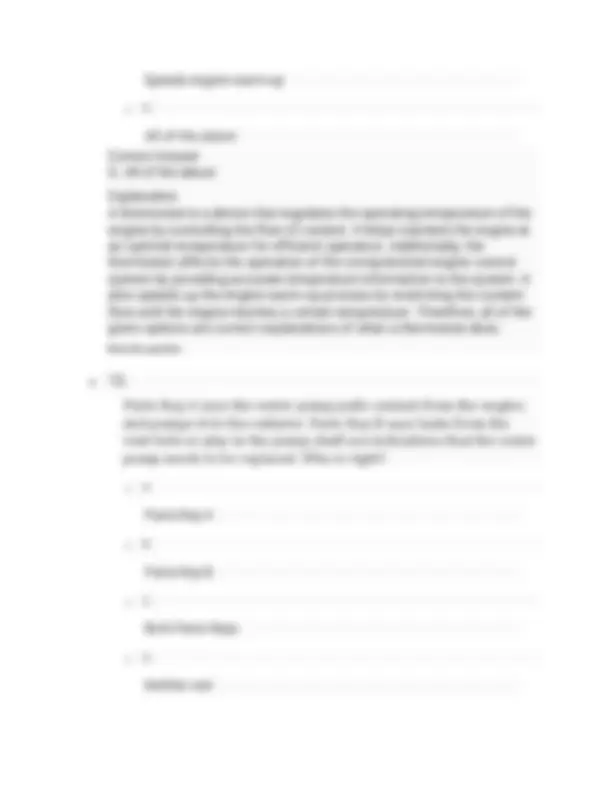
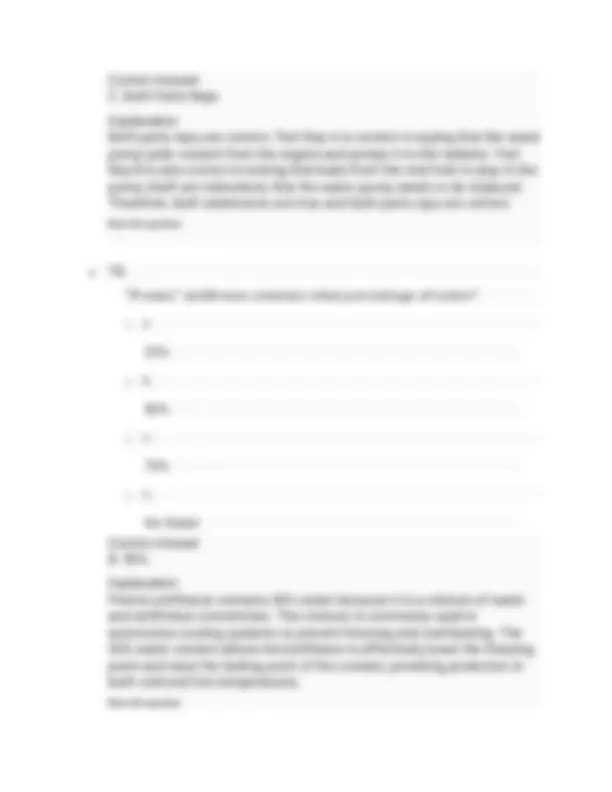
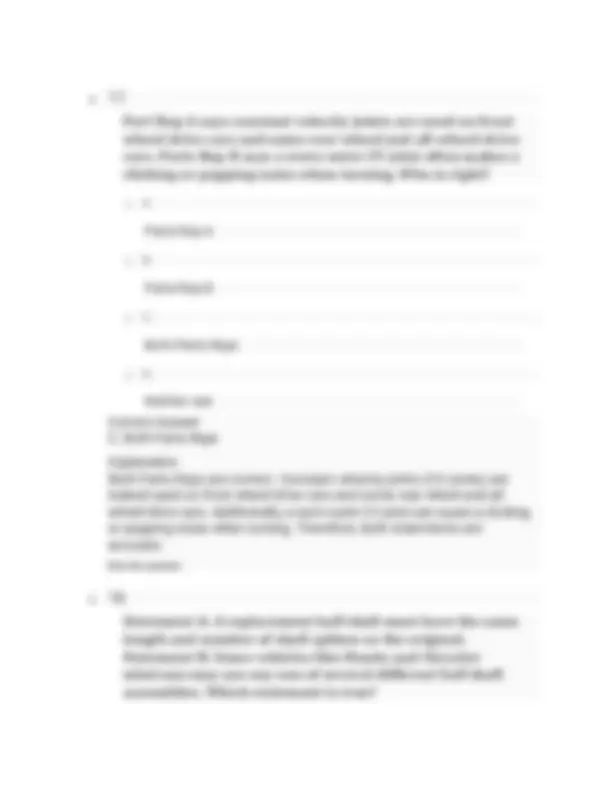
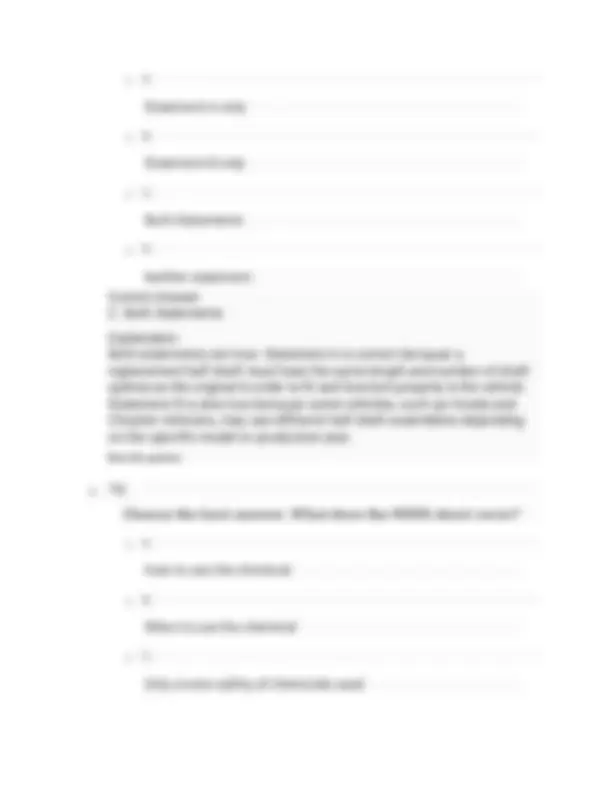
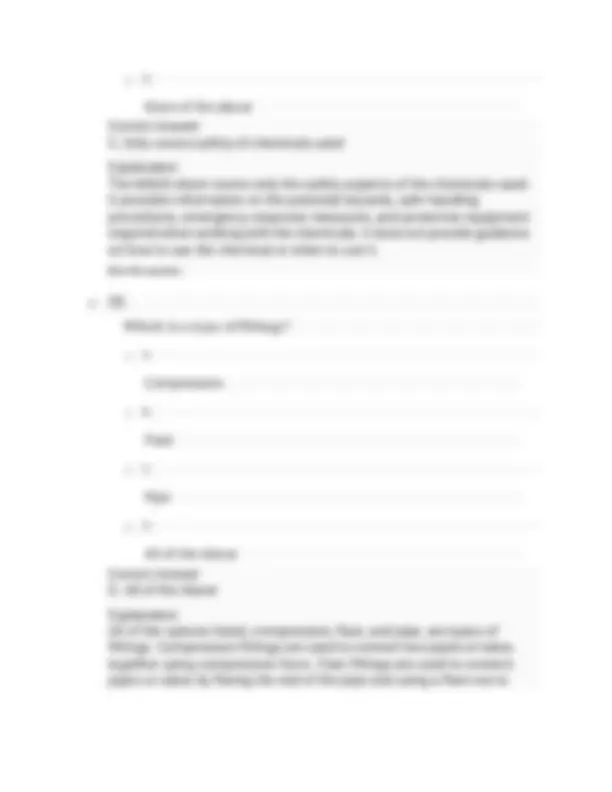
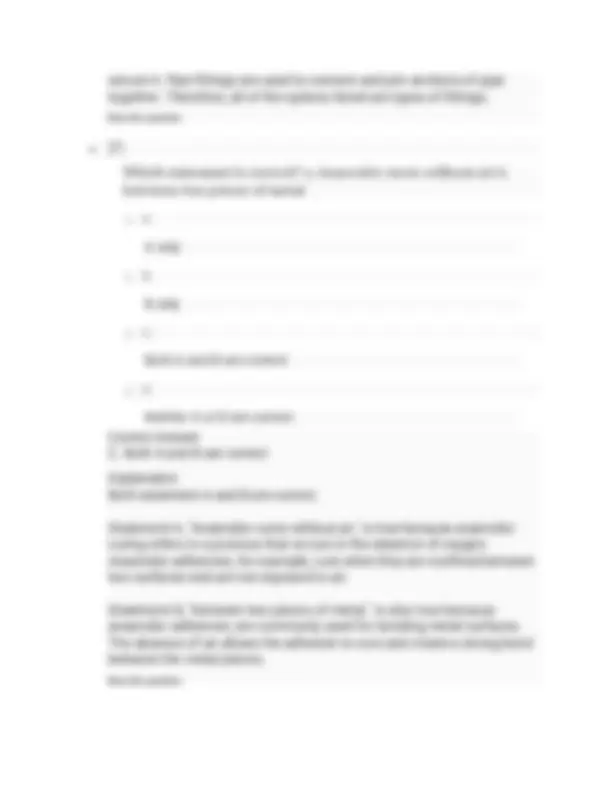
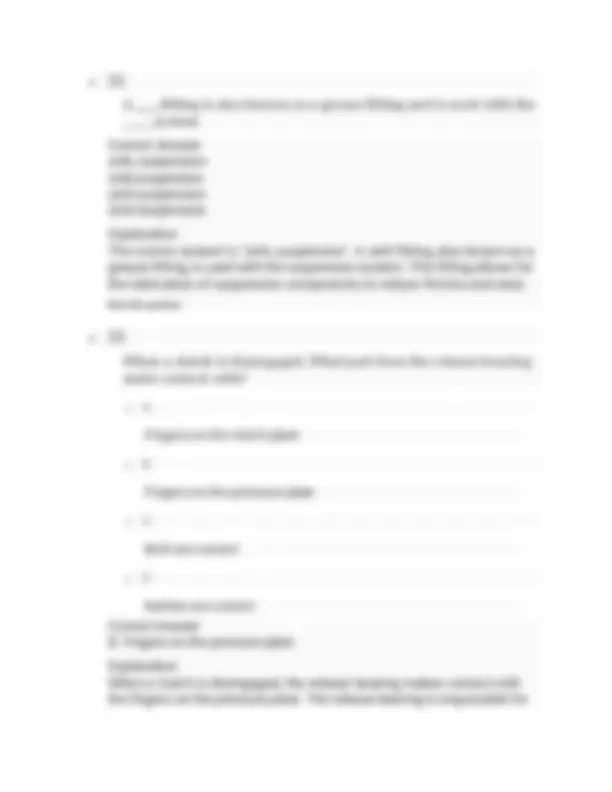
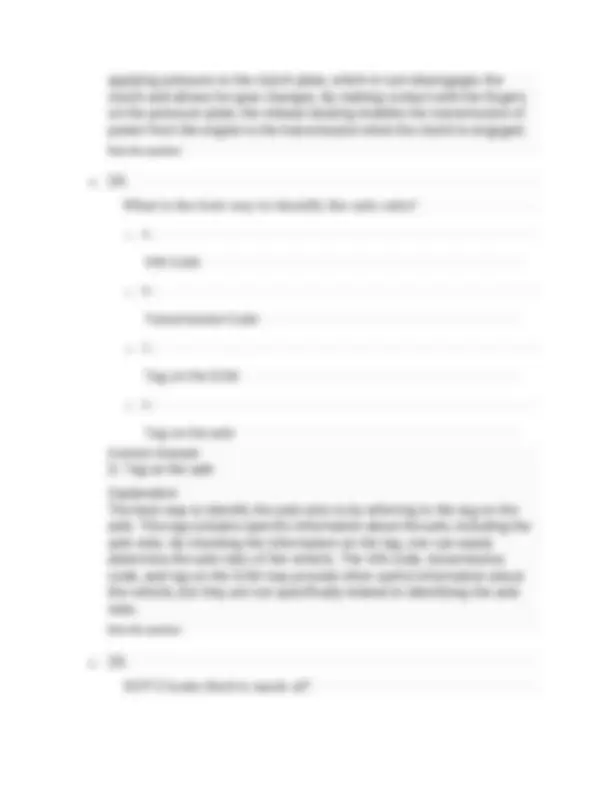

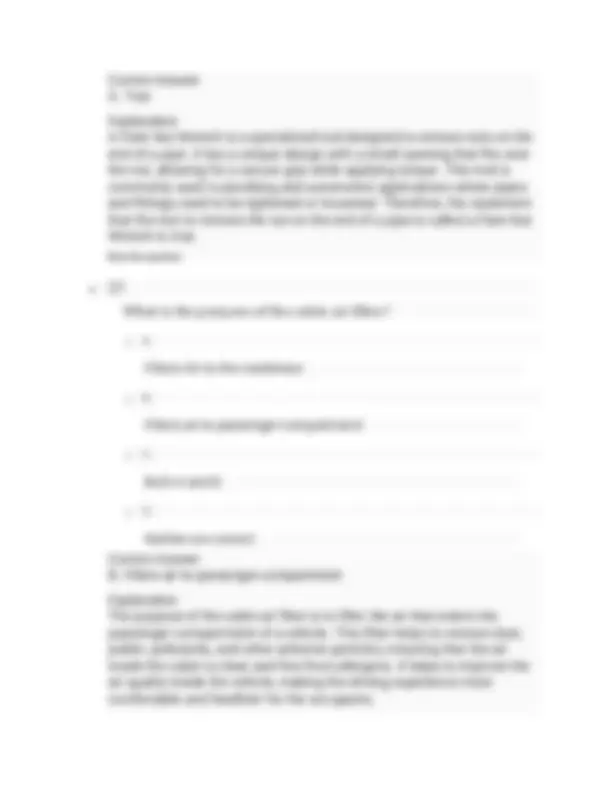
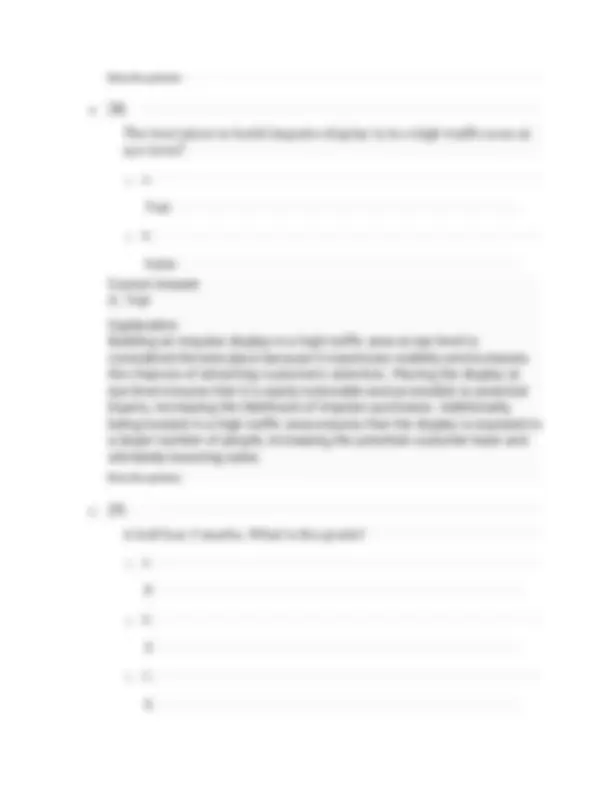
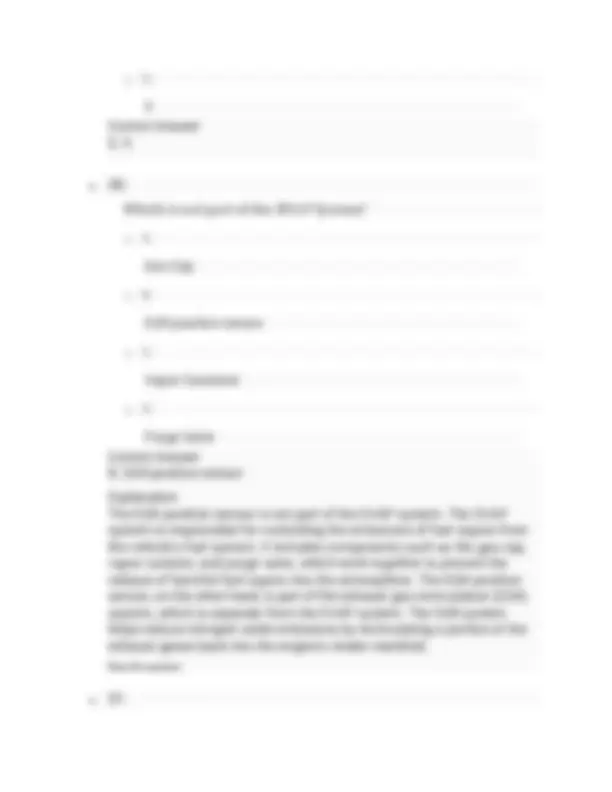
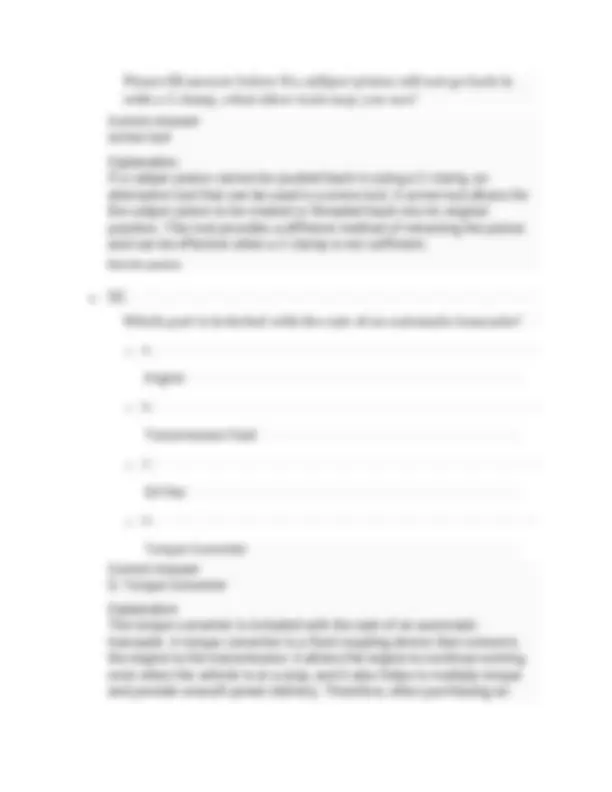
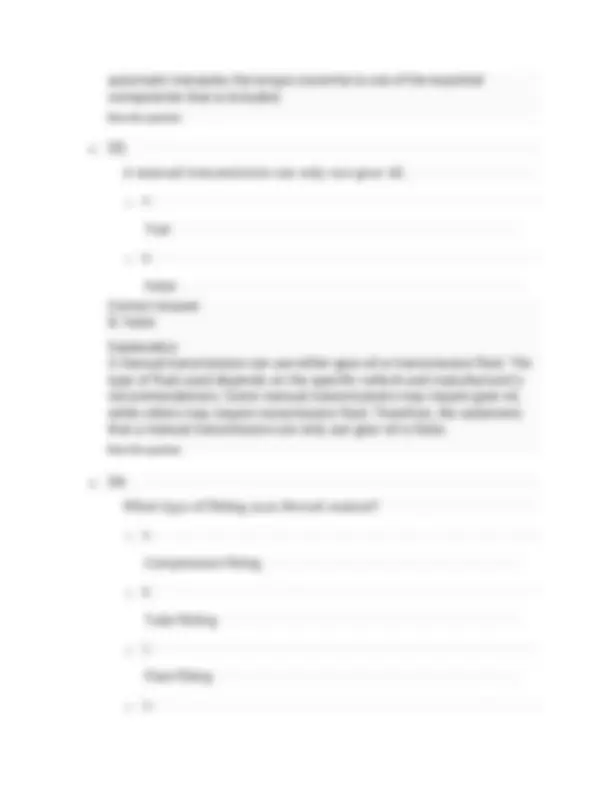
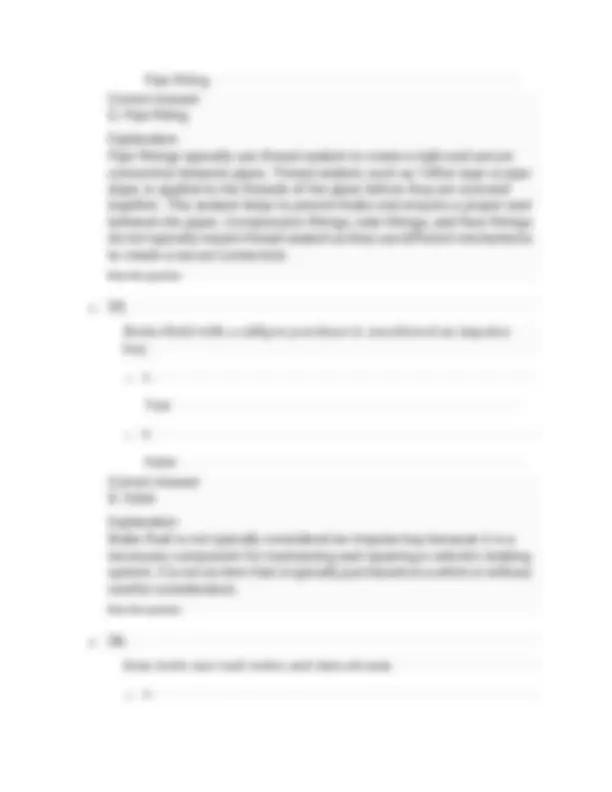
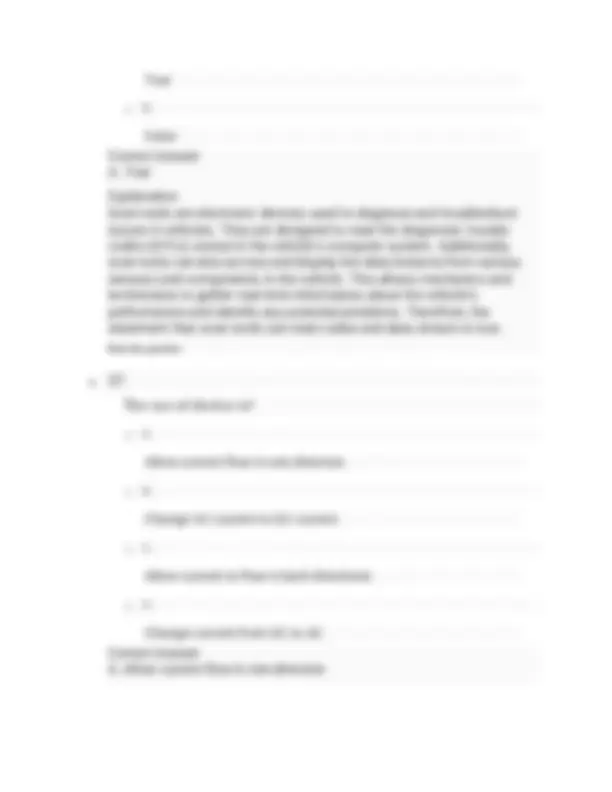
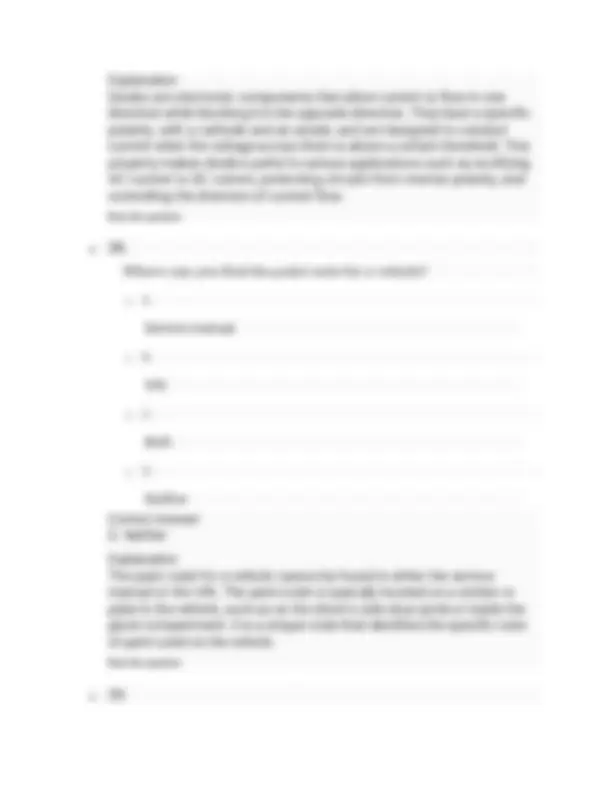
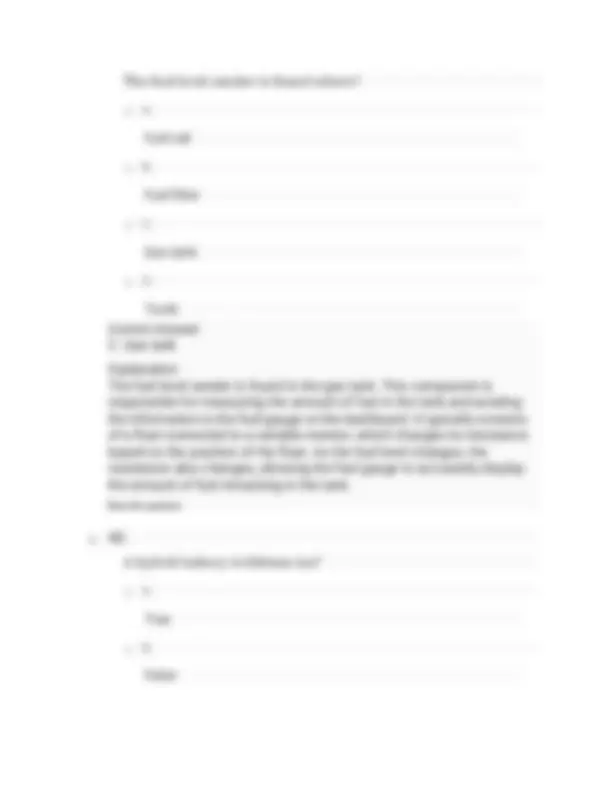
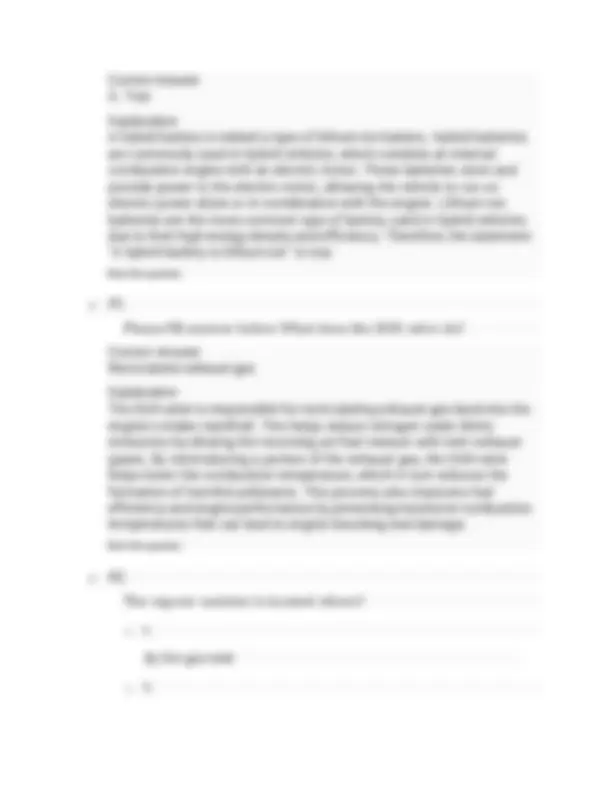
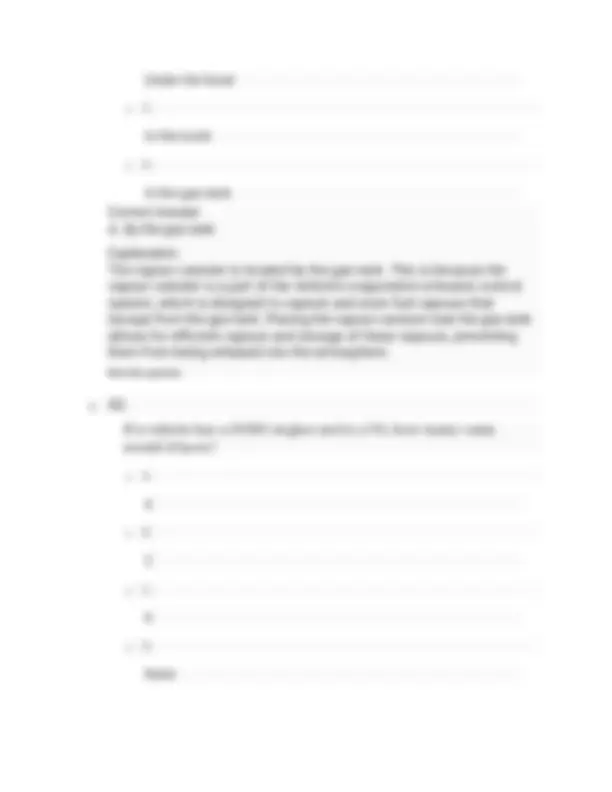

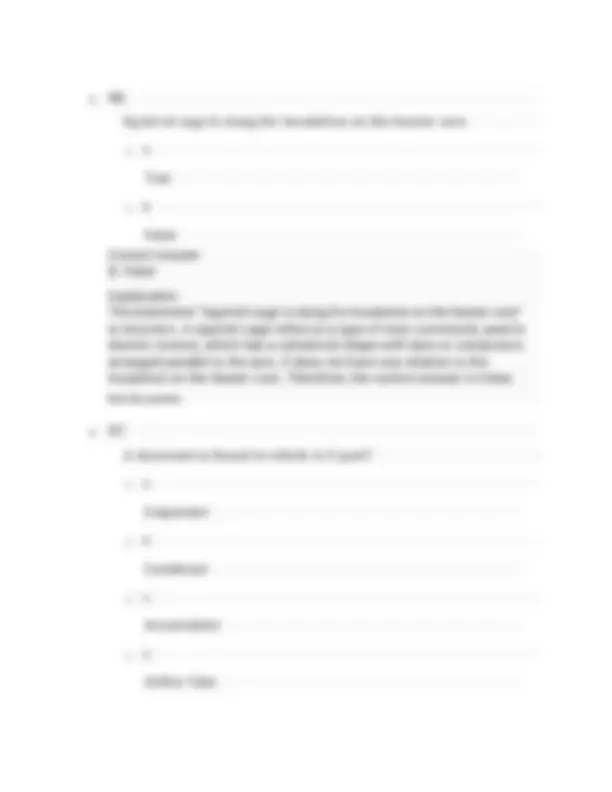
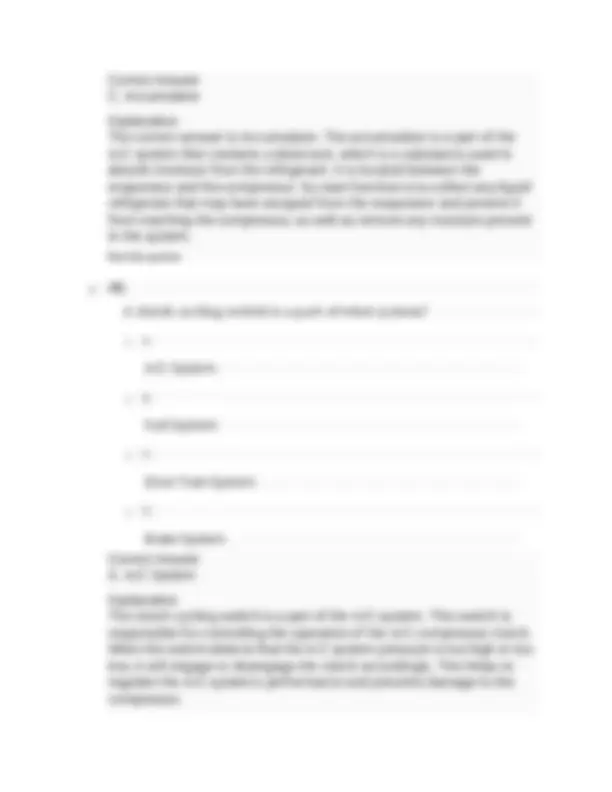
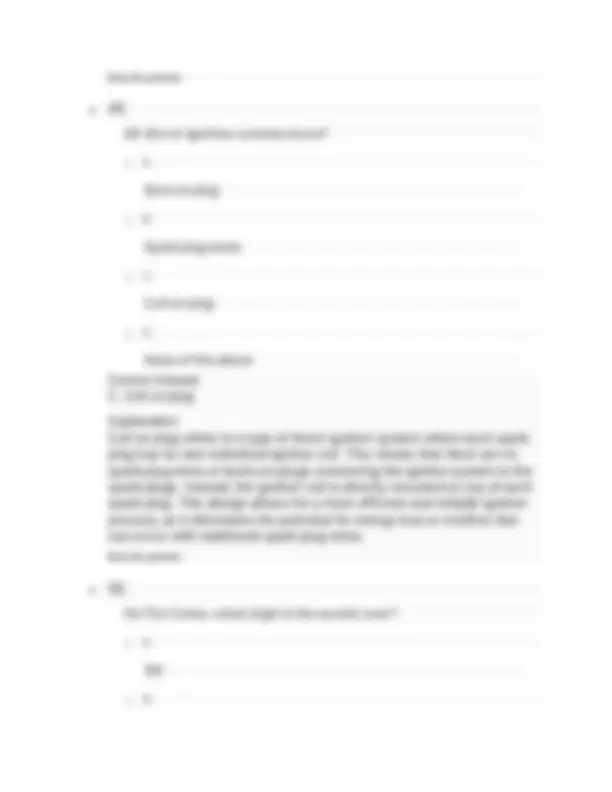



Study with the several resources on Docsity

Earn points by helping other students or get them with a premium plan


Prepare for your exams
Study with the several resources on Docsity

Earn points to download
Earn points by helping other students or get them with a premium plan
Community
Ask the community for help and clear up your study doubts
Discover the best universities in your country according to Docsity users
Free resources
Download our free guides on studying techniques, anxiety management strategies, and thesis advice from Docsity tutors
ASE Practice Test with Questions and Answers Latest Update.
Typology: Exams
1 / 48

This page cannot be seen from the preview
Don't miss anything!









































Correct Answer C. Generate brake pressure Explanation The brake caliper applies pressure to the brake pads, which then clamp down on the rotor to create friction and slow down the vehicle. Rate this question:
o A. Engage brake pads o B. Store brake fluid o C. Generate brake pressure o D. Adjust brake balance o A. DOT- 3 o B.
Correct Answer B. DOT- 4 Explanation DOT- 4 brake fluid is commonly used in modern vehicles due to its higher boiling point and compatibility with various brake systems. Rate this question:
Correct Answer B. Master cylinder Explanation The master cylinder converts the force from the brake pedal into hydraulic pressure that operates the brakes. o C. DOT- 5 o D. DOT-5. o A. Brake booster o B. Master cylinder o C. Brake rotor o D. Brake caliper
Correct Answer D. Collect excess brake fluid Explanation The brake fluid reservoir collects excess brake fluid and compensates for fluid displacement as the brake pads wear down. Rate this question:
Correct Answer D. Anti-lock brake system (ABS) Explanation The ABS modulates brake pressure to prevent wheel lockup, improving steering control and stopping distance. Rate this question:
o A. Overheating of brake fluid o B. Excessive brake fluid level o C. Worn-out tires o D. Loose wheel bolts Correct Answer A. Overheating of brake fluid Explanation Brake fade occurs when brake fluid overheats, leading to reduced braking efficiency and increased stopping distances. Rate this question:
o A. Increase rotor weight o B. Improve brake pedal feel o C. Add decorative patterns o D. Restore parallelism and surface finish
Correct Answer C. Brake rotor Explanation The brake rotor, when clamped by the brake pads, generates friction that converts kinetic energy into heat, slowing down the vehicle.
o B. Brake booster o C. Brake rotor o D. Brake caliper o A. Technician A o B. Technician B o C. Both Technician A and B o D. Neither Technician A or B
Correct Answer A. Technician A Explanation Technician A is correct. An OEM finish refers to the original factory paint job on a vehicle. It is the paint job that the vehicle had when it was first manufactured. Technician B is incorrect in stating that OEM is the black coating put on new parts. Rate this question: o A. Technician A o B. Technician B o C. Both Technician A and B o D. Neither Technician A or B Correct Answer B. Technician B Explanation Technician B is correct. A full wet coat of paint is produced by moving the spray gun slower than normal. Holding the gun back and spraying fast, as suggested by Technician A, would result in a dry or uneven coat of paint. By moving the spray gun slower, more paint is applied to the surface, resulting in a smoother and more even finish. Rate this question:
Correct Answer B. Technician B Explanation Technician B is correct. Primecoats are used in vehicle painting to improve adhesion between the base coat and the surface, as well as provide corrosion protection. They act as a foundation for the topcoat and help ensure a smooth and durable finish. Technician A is incorrect in stating that primecoats are the main color used to paint the vehicle, as primecoats are typically transparent or lightly pigmented and are not intended to be the final color of the vehicle. Rate this question:
o B. Technician B o C. Both Technician A and B o D. Neither Technician A or B o A. Technician A o B. Technician B o C. Technician A
Correct Answer C. Both Technician A and B Explanation Both Technician A and B are correct. Technician A is correct in stating that topcoats are the final layer of paint applied to the substrate. Technician B is correct in stating that several coats of topcoat may be applied in some cases. This is because multiple coats of topcoat can be applied to achieve a desired level of coverage, color, or finish. Rate this question:
Correct Answer D. Neither Technician A or B o D. Neither Technician A or B o A. Technician A o B. Technician B o C. Both Technician A and B o D. Neither Technician A or B Both Technician A and B
Correct Answer B. Technician B Explanation Technician B is correct. A medium wet coat is produced by moving the spray gun at normal speed over the surface being refinished. Technician A's statement about the coat between the sealer and the clearcoat is incorrect.
o A. Emissions o B. Exhaust o C.
Correct Answer C. Charging Explanation The alternator belongs to the charging system. It is responsible for generating electrical power to recharge the battery and power the electrical components of the vehicle while the engine is running. Rate this question:
Correct Answer B. Condenser Explanation The compressor sends high pressure to the condenser. The condenser is a component in the air conditioning system that is responsible for releasing heat from the refrigerant. The high pressure refrigerant from the compressor enters the condenser, where it is cooled and condensed o D. Fuel o A. Evaporator o B. Condenser o C. Radiator o D. Accumulator Charging
Correct Answer A. Parts Rep A only Explanation Parts Rep A is correct. The Cold Cranking Amps (CCA) rating of a replacement battery should be the same or higher than the original battery. CCA indicates the battery's ability to start the engine in cold temperatures. If the replacement battery has a lower CCA rating, it may not provide enough power to start the engine effectively. Parts Rep B's statement about the battery's "group size" depending on the CCA rating and post configuration is unrelated to the question and does not provide a correct answer. Rate this question:
o A. Parts Rep A only o B. Parts Rep B Only o C. Both Parts Rep A and B o D. Neither one o A. Convert Direct Current (DC) to Alternating Current (AC) o B.
Correct Answer B. Convert Alternating Current (AC) to Direct Current (DC) Explanation The function of the diodes (rectifier assembly) in an alternator is to convert Alternating Current (AC) to Direct Current (DC). Diodes are electronic components that allow the flow of current in only one direction. In an alternator, the diodes are used to rectify the AC output of the alternator into a DC current that can be used to charge the battery and power the electrical system of the vehicle. By converting AC to DC, the diodes ensure that the electrical system receives a stable and consistent source of power. Rate this question:
o A. May cause shifting problems o B. May cause slipping problems o C. May damage the transmission o D. All of the above Convert Alternating Current (AC) to Direct Current (DC)
Correct Answer B. Uses gears to deliver more cranking torque Explanation A gear reduction starter uses gears to deliver more cranking torque. By reducing the speed of the engine's rotation, the starter is able to provide a higher amount of torque to the engine, making it easier to start. The gears in the starter help to increase the mechanical advantage, allowing for greater force to be applied to the engine's crankshaft. This increased torque helps overcome the resistance of the engine's compression, ensuring a successful start. Rate this question:
o A. located inside the transmission pan, making it accessible for replacement during fluid changes. Therefore, both Parts Reps are providing accurate information. Rate this question:
Correct Answer D. Replace the field coils Explanation The magnets in a permanent magnet starter replace the field coils. In a traditional starter, the field coils create a magnetic field that interacts with the armature to generate rotation. However, in a permanent magnet starter, the magnets themselves create the magnetic field, eliminating the need for field coils. Therefore, the magnets replace the field coils in this type of starter. Rate this question:
o B. Replace the brushes o C. Replace the armature o D. Replace the field coils o A. Calipers o B. Master Cylinder o C. Wheel Cylinders Hold the shaft bearings in place